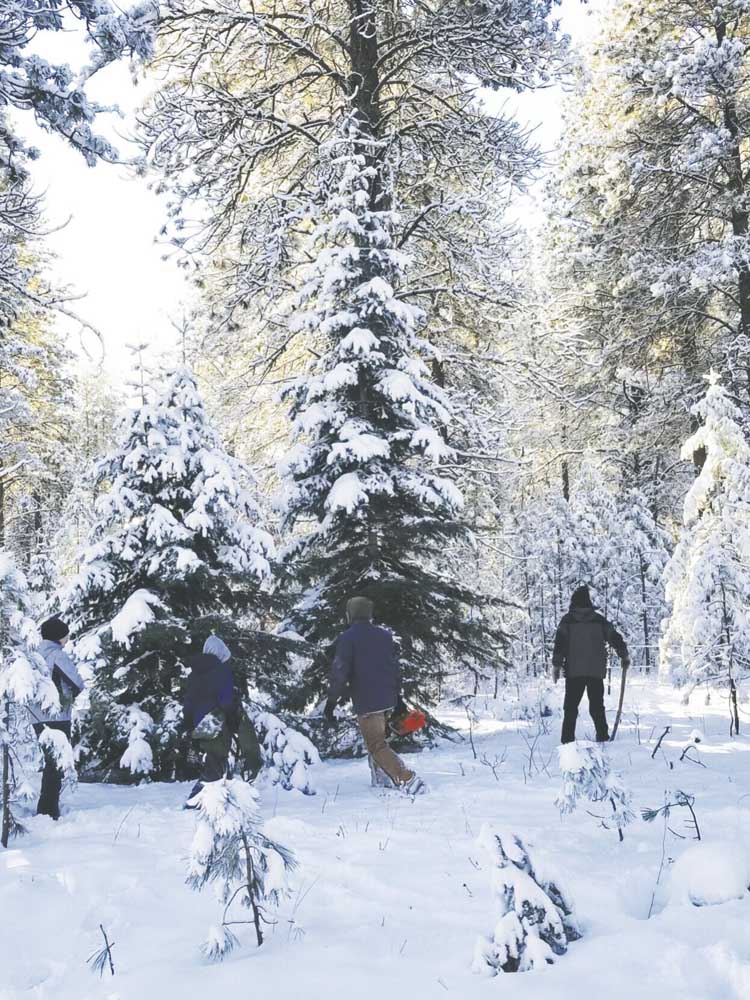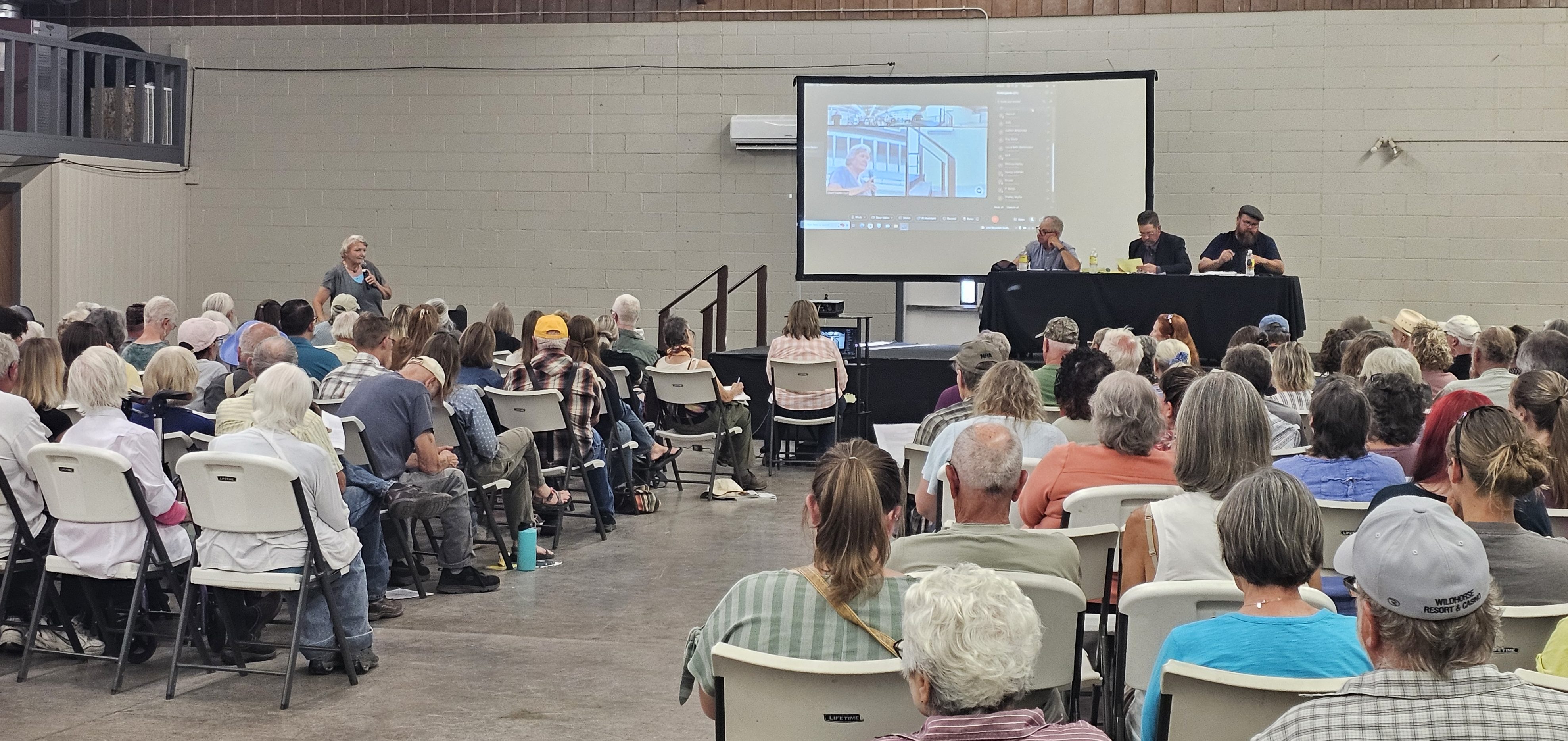Christmas tree hunt is on
Published 3:00 am Saturday, November 27, 2021

- Searching through the snowy woods for the ideal Christmas tree is an annual tradition for many families.
BAKER CITY — The hunting season is on, but the hunters in this case needn’t worry about their quarry detecting their scent or hearing the snap of a twig.
Trending
Nor will the objects of this hunt sprint away long before you have them in your sights.
At most they might shiver a bit if the wind is high.
And yet Christmas trees, despite lacking the keen instincts and awe-inspiring agility of a deer or elk, do not always make themselves readily available.
Trending
They sometimes hide, as the saying goes, in plain sight.
Trees, of course, tend to grow in groves. And this is a typical trait for the grand and white firs that are a favorite Christmas tree in Northeastern Oregon forests.
When you come across a cluster of firs — especially if they’re slathered in snow — it can be difficult to distinguish between a specimen with gaping gaps in its limbs or a crooked trunk, and one that would be the crowning holiday adornment for your living room.
For many families, though, this seasonal search is as integral to the holidays as carols, Charlie Brown and cookies decorated with frosting.
And it’s considerably less expensive than most hunts.
A permit to cut a tree on national forest land costs just $5.
“If you are on the hunt for the perfect tree, you are welcome to harvest one from the Wallowa-Whitman National Forest,” said Shaun McKinney, supervisor for the Wallowa-Whitman, which is based in Baker City.
The same goes for the Umatilla and Malheur national forests.
“You’ll have a memorable adventure and a story to share with family and friends,” McKinney said.
Permits are available at many local stores (see list in the shaded box on this page) or online by setting up an account at Recreation.gov.
Lest anyone worry about contributing to deforestation by cutting a Christmas tree, quite the opposite is true, Forest Service officials say.
Removing a small-diameter tree — the limits are 15 feet tall and a trunk six inches in diameter — can improve forest health by reducing the competition for sunlight, water and nutrients, allowing remaining trees to grow faster.
“In most parts of the forest, removing small trees reduces the risk of wildfire, helps other trees to grow larger and more fire-resistant, and creates open areas that provide forage for wildlife,” according to a press release from the Forest Service. “So don’t feel bad when you cut that little tree. You are supporting a healthy forest.”
Other guidelines for cutting a Christmas tree on national forest land:
• Cut your tree at least 50 feet away from the road.
• Clean up any trimmings or limbs.
• Leave stumps no higher than 10 inches. It is not legal to “top” a tree taller than 15 feet.
• Remove any green limbs left that remain on the stump.
• Do not cut in active timber sales or areas that have been planted with new trees.
• Do not cut on private land, wilderness areas, designated campgrounds, or existing tree plantations.
• Do not cut trees in the following areas: Baker City Watershed, Anthony Lakes Campground or Ski Area, Starkey Experimental Forest, La Grande Watershed, Hurricane Creek, and Lostine drainages.
• Do not cut trees in posted Old Growth areas or within 1/4 mile of wild and scenic corridors.
• Christmas tree cutting within sight of a state highway is prohibited.
National forests in the Blue Mountains are amply endowed with multiple species of conifers that are suitable for Christmas trees.
You’re not likely to find the symmetrical specimens of tree farms or sales lots in towns, to be sure.
But browsing the orderly rows can’t fairly be called an adventure.
Acquiring a tree in the forest, by contrast, often involves trudging through snow, over the hills and through the woods, with the likelihood of getting sticky sap on your hands and clothes.
If you do venture into the forest, prepare for slippery roads and chilly temperatures. Bring food, warm drinks and extra clothing, and make sure somebody knows where you’re going and when you expect to return.
Here’s a list of some of the common tree species in our region:
Grand fir/white fir
These true firs are abundant at the lower elevations that are more likely to be accessible in late fall.
They also have a classic Christmas tree form, with nicely spaced branches that offer plenty of places for ornaments, lights and tinsel.
Although grand fir and white fir are separate species, hybrids bearing traits of both are common in the Blue Mountains, the late Charles Grier Johnson Jr., longtime forest ecologist in the Blues for the Forest Service, wrote in his definitive “Alpine and Subalpine Vegetation of the Wallowa, Seven Devils and Blue Mountains.”
“Hybridization between these two true firs … make identification difficult,” Johnson wrote.
But names, of course, are less important than shape.
Subalpine fir
Full-grown subalpine firs are easy to recognize from their slender, dart-like shape. But in juvenile form they sometimes resemble grand firs.
A distinguishing characteristic of the subalpine fir is its needles. They grow at all angles from the limb, rather than in flat, orderly rows as a grand or white fir’s do.
Although subalpine firs usually grow at higher elevations than grand firs, the two species occasionally mingle between about 5,500 and 6,000 feet.
Douglas-fir
Not a true fir — hence the hyphen — these conifers have more in common with hemlocks.
Although Douglas-fir is a favorite Christmas tree species in the Cascades and Coast Range, the Rocky Mountain variety that grow in our forests typically aren’t as graceful in appearance as grand or white firs.
Lodgepole pine
Lodgepole pines are easy to find, but lodgepole pines that make good Christmas trees are not.
Lodgepoles of the right height tend to be a bit sparse of limb and a bit unkempt in appearance, as though they had slept in an alley.
Lodgepoles are the only pines native to Oregon whose needle bundles contain two needles (ponderosa pines have three needles per bundle, white and whitebark pines five).
Ponderosa pine
Like lodgepoles, ponderosa pines are plentiful in many places, especially at lower elevations. But their long needles aren’t well-suited for ornament placement, and they lack the layered limbs that distinguish firs.
Engelmann spruce
A person might mistake a spruce for a fir, but there’s an easy way to tell which is which: grab a limb.
If you think you just poked a porcupine, you just touched a spruce.
Spruce needles are stiff and have prickly edges, unlike the softer, more finger-friendly firs.
Spruce trees usually grow in wet areas, and often are found in groves near streams.
Christmas tree permits cost $5 and are available at these businesses:
Bi Mart, Baker City
D&B Supply, Baker City
York’s, Baker City, OR
The Gold Post, Sumpter
Burnt River Market, Unity
Hitchin’ Post Grocery, Richland
Halfway Market, Halfway
Wallowa Food City, Wallowa
Dollar Stretcher, Enterprise
Sports Corral, Joseph
Miller’s Home Center, La Grande
Bi Mart, La Grande
Hometown Hardware, Union
Island City Market & Deli, Island City









